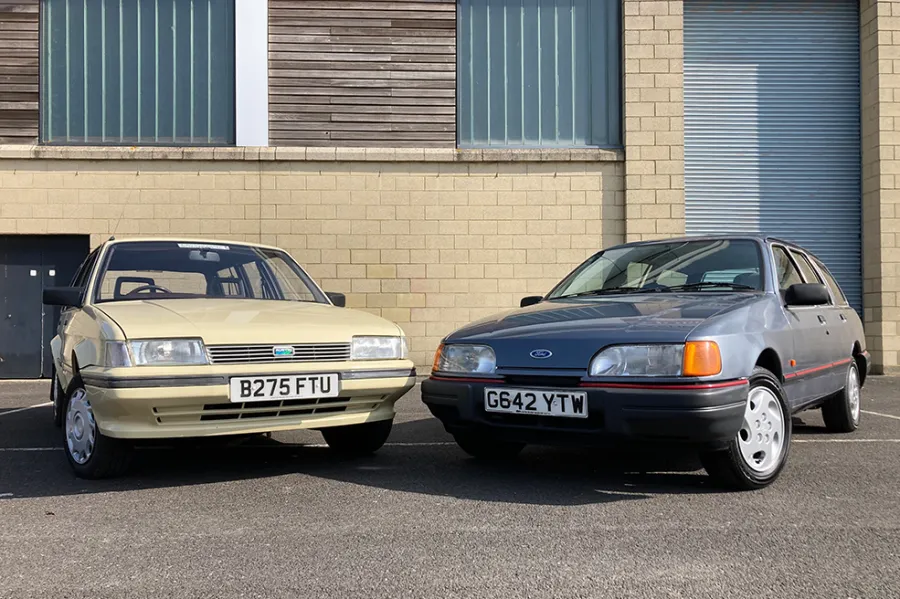1980s estate cars offer a classic experience with comfort and practicality to match. Can the plucky Austin Montego stand up to the might of the Ford Sierra?
Words and images: Joe Miller
The modern solution to the family car is the SUV, but back in the 1980s making a family car was a much simpler, more dignified affair: take one sales-rep saloon, add a box on the back and create an estate car. Most children of the 80s will remember family holidays and being dropped at school in the back of an estate made by Volvo, Vauxhall or even Citroën, but Ford owned the estate car market in much the same way it dominated the saloon sector for sales. Given the popularity of the Mk5 Cortina Estate, it’s no wonder the futuristic Ford Sierra gained a load-lugging variant.
Meanwhile, British Leyland were keen to increase its market share and the Montego was how it planned to do it. The family car market was just as lucrative as the sales rep one and by 1984, estate variants of both these saloon favourites were available.
During the 1960s and 70s, Ford’s all-conquering Cortina had dominated the sales charts in Britain – its familiar Ford badge, combined with the something-for-everyone range of engines and trim levels won hearts. By the 1980s, however, the Mk5 Cortina – itself differing little from the 1970-released Mk3 – was showing its age and Ford decided to ditch conservative familiarity for radical modernity in its replacement.
Christened ‘Sierra’ – the Spanish word for “mountain range” – the new car featured far more curvaceous, futuristic styling than the Cortina. Aerodynamics was Ford’s main selling-point – by cutting through the air over 30 percent more efficiently than the Cortina, the Ford Sierra sported much improved fuel economy from the same engines and far less wind and road noise at speed. Economy and refinement are arguably the two biggest must-haves for the travelling sales rep, so Ford clearly knew its market.
Slippery the body might have been but the Sierra’s styling was initially divisive, with Ford’s typically more conservative customers put off by the futuristic design that had been nicknamed the “jelly-mould” during development. The new look had few fans and when you consider that for the Sierra’s first year in production, last-of-line Mk5 Cortinas were available at heavily-discounted rates, it’s no wonder that the Ford Sierra was initially outsold by its predecessor.
Ford stuck to its guns with the feeling of modernity, however, with a new sweeping dashboard that, in an effort to ape BMW’s cabins, curved towards the driver to give a cockpit-esque feel. To Ford’s credit, it works well with all the instruments clear, controls easy to reach and a commanding view ahead.





